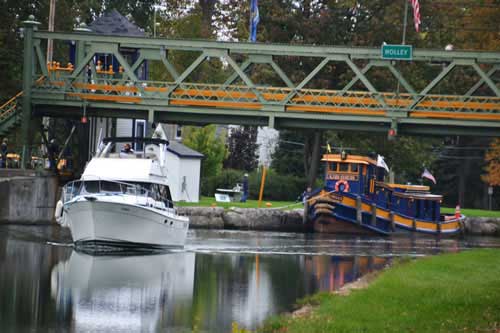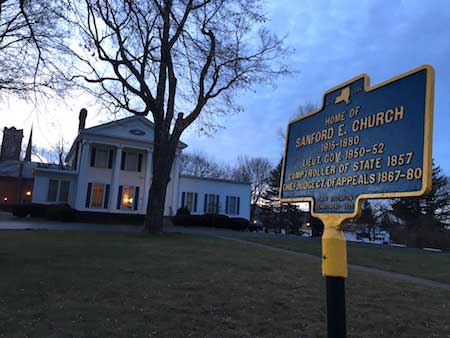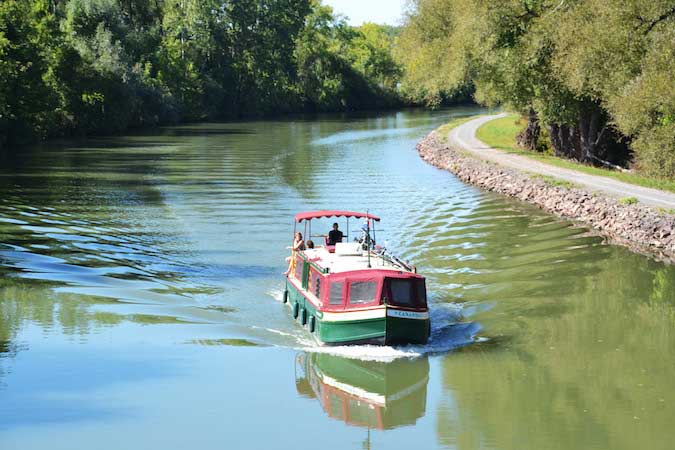Editorial: Canal’s bicentennial is opportunity to rediscover historic waterway
This is a big year for the Erie Canal, the historic waterway that transformed New York and the United States. 2017 starts the beginning of an eight-year bicentennial of the canal’s construction, which began in 1817 and finished in 1825.
The Erie is often referred to as a lowly “ditch.” But the canal was an incredible feat in its day, opening up commerce, turning New York into the Empire State and allowing for a western migration in the 1800s that led to fervent social and religious movements – abolition, temperance, women’s suffrage and more. Many leaders of those movements, such as Frederick Douglass and Susan B. Anthony, lived in canal communities.
Construction on the 363-mile manmade waterway started in 1817 in Rome. It took eight years to take down trees, remove stumps and clear a path across upstate, linking Buffalo to Albany.
The canal is still operational, a “working museum” with lift bridges, guard gates, waste weirs, and many tugboats, barges and pleasure boats.

The lift bridge in Holley goes up to make room for a modern boat. The historic Urger, a tugboat from 1901, is pictured in back.
The canal also is increasingly popular for cyclists, joggers, and kayakers.
With this year the start of the bicentennial, it’s a good time to pay notice to the canal towns in Orleans.
Medina, Albion and Holley were busy spots along the canal and the wealth from the Erie’s heyday is still prominently on display in these villages.
Take a look at the towering churches, ornate government buildings, the stately mansions – even the beautiful historic cemeteries. They have artistry – in the architectural design, stained-glass windows (including 43 Tiffany windows in Albion), and the fine craftsmanship with the woodwork and stone carvings. (Before he become a multi-millionaire by building luxurious sleeping cars for railroads, George Pullman lived in Albion, making furniture and moving houses when the canal was widened.)
The canal brought wealth into the community, and the residents didn’t build cheap. They spared no expense leaving landmarks that remain community treasures today.

This house in Albion, now a funeral home, was once home of Sanford Church, a leading political figure in the state from 1850 to 1880.
Some of the canal towns around the state have lost some of the flavor from the canal prosperity in the 1800s. Mansions were leveled for chain stores, and other historic structures were lost “progress.”
In Orleans, the canal villages have persevered, keeping their historic downtown business districts, maintaining their houses of worship and staying diligent caretakers of the community’s most revered residences.
The canal was expanded from 1905 to 1918 to make more room for bigger boats. That “Barge Canal” from a century ago was recently declared a National Historic Landmark.
Only 16 lift bridges remain from the canal’s widening. Orleans County is home to seven of those bridges. When a boat passes underneath, the bells go off to warn traffic the bridge is going up.
It’s a throwback to a different era, and it’s very much a part of the county’s identity, a beloved institution.
If you’re visiting Orleans, be sure to stop and see one of the marvels of the canal – a bridge that moves up to accommodate a boat. How’s that for small-town hospitality.
(Editor’s Note: This was written with about 500 words as the introduction to the Lake Country Pennysaver’s annual Visitor’s Guide. Orleans Hub readers are welcome to take a 500-word challenge to promote Orleans County. Send the short essays to news@orleanshub.com.)






































































